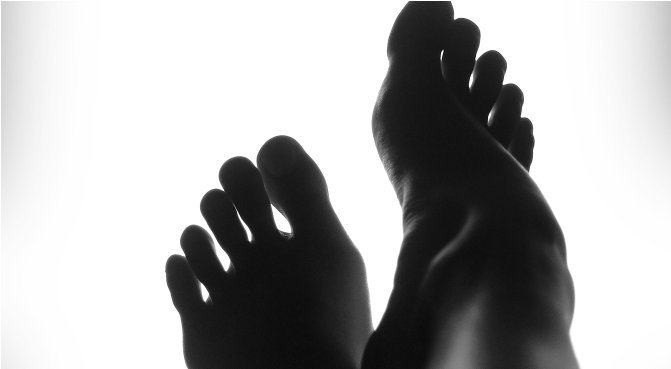Lets start at the bottom, where the initial foundation of your posture begins. The Plantar Fascia is a thin ligament that connects your heel to the front of your foot. This ligament supports the arch in your foot. It is apparently crucial to helping you stand and walk.
The cause of a Plantar fasciitis is usually connected to a few changes within a person’s biology or functionality. For example, changes in weight may affect it, so pregnancy can cause bouts of plantar fasciitis – particularly during late pregnancy – or if you suddenly gain weight. It can occur if you are a long distance runner, or if you are on your feet all day due to your occupation. Plantar fasciitis can also be connected to physiological problems, such as high or low arches.
The general consensus on the symptoms of this condition is pain and stiffness at the bottom of the foot. It can get worse in the morning and can also get worse by either standing for long periods of time, or if you’ve sat down for a while and then you stood up. Pain is not usually felt during the activities but once the activity has finished, it sets in. Climbing stairs can be difficult with heel stiffness due to to the stiffness in the Achilles but this is often connected to plantar fasciitis.
Plantar fasciitis can affect you in more ways than just your feet. Researchers Cheung and Kai-Nan have demonstrated that increased tension in your plantar fascia can change your posture and how you distribute your body weight. In their work, they explain that it alters the ankle so that weight is distributed more anteriorly and laterally to alleviate pressure on the plantar fascia, which puts the sufferer in a more comfortable position. This in turn change your posture, which then creates difficulties in other places.
So after understanding all this, the question is: is the process reversible? The answer is yes. In fact it’s standard practice for all sports therapists. We know it as the practice of undoing fascial bonds. Here’s how it works. Stand up and grab the bottom of your T-shirt. Twist it round. The T-shirt on your body now feels tight and it’s awkward to move your shoulders. If you’re still standing, your body might want to turn towards the twisted T-shirt. And your fascia woks in exactly the same way – except under the skin. When you return your T-shirt to the right place it feels better. The same can be said for your fascia.
Book in an appointment now to see if your fascia can benefit or we can look at your plantar faciitis.
References and further research
Bird, S. Black, N. Newton, P (1998) Sports Injuries Causes, diagnosis, treatment and prevention Tottenham Court Road: Stanley Thornes
Brukner, P & Khan, K (2008) Clinical Sports Medicine [3rd ed] Sydney: McGraw Hill
Cash (2002) Sport & remedial massage therapy London: Ebury press
Cheung. J, Zhang. M, Kai-Nan. A, (2006) Effect of Achilles tendon loading on plantar fascia tendon in the standing foot. Retrieved. February, 2016, from www.sciencedirect.com
Frontera, W. (2003) Rehabilitation of sports injuries Oxford: Blackwell Publishing
Paine .T, (2005) The complete guide sports massage London: A&C Black
